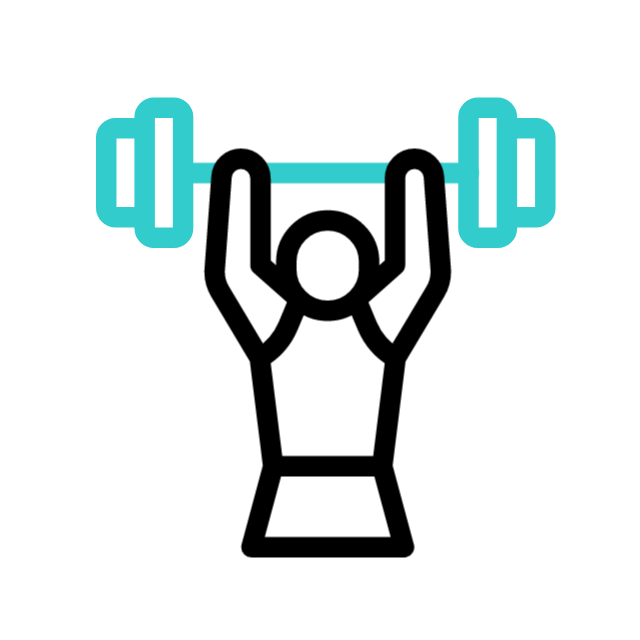The Most Common Mistakes in Back Pain Management
October 3, 2024
Back pain is an all-too-familiar struggle for many, often leading to frustration and a sense of helplessness on where to start managing it.

It can feel overwhelming when traditional methods don’t provide relief, leaving you stuck in a cycle of discomfort. However, by understanding common traps that can exacerbate your pain, you can take proactive steps toward a healthier back and improved well-being.
1. Ignoring the Root Cause

One of the biggest mistakes people make is treating back pain without addressing the underlying issue. Whether it’s lack of movement, muscle imbalances, or past injuries, understanding what’s causing your pain is essential. Simply masking the discomfort with over-the-counter painkillers won’t lead to long-term relief.
How to Avoid This Mistake: Consider seeking a medical professional assessment to get to the root of your pain. Furthermore, personalised care, like what Curv offers, can help you identify the specific issues contributing to your discomfort and develop a targeted treatment plan.
2. Inconsistent Exercise Routines

Many individuals know that exercise is beneficial for back pain, yet they often approach it inconsistently. Alternating between periods of inactivity and intense workouts can lead to muscle strain and worsen existing conditions.
How to Avoid This Mistake: Create a balanced routine that incorporates regular, gentle exercises specifically designed to strengthen your back and core. Simple movements can help maintain flexibility and reduce stiffness, making it easier to perform daily tasks. Remember, consistency is key! Curv helps you put together an effortless exercise plan which works around your pain.
3. Neglecting Ergonomics
In today’s world, most of us spend hours at desks or in front of screens, often overlooking the importance of ergonomics. An improper workstation can lead to slouching, muscle tension, and chronic pain.
How to Avoid This Mistake: Make necessary adjustments to your workspace. Ensure that your chair supports your lower back, your feet are flat on the floor, and your monitor is at eye level. Small changes can make a significant difference in reducing back strain throughout the day.
4. Skipping Movement Breaks
Many people underestimate the power of movement breaks. Sitting for prolonged periods can tighten muscles and exacerbate pain, yet we often find ourselves glued to our desks.
How to Avoid This Mistake: Incorporate short breaks every hour to stretch and move around. Simple exercises like shoulder rolls, neck stretches, or even a quick walk can alleviate tension and promote circulation. These breaks are crucial for maintaining back health, especially in a sedentary work environment.
5. Overlooking Mental Health

The mind-body connection is real, and stress can significantly impact back pain. Neglecting to address mental health can lead to a vicious cycle where stress exacerbates pain, and pain increases stress levels.
How to Avoid This Mistake: Practice stress management techniques such as mindfulness, meditation, or yoga. These can help you not only manage your pain but also improve your overall mental well-being. Remember, taking care of your mind is just as important as caring for your body.
6. Relying Solely on Temporary Solutions
It’s tempting to reach for quick fixes like pain medications or chiropractic adjustments without considering a comprehensive approach to care. While these can provide temporary relief, they often do not address the underlying issues.
How to Avoid This Mistake: Consider a holistic approach to back pain management. This may include physical therapy, CFT plans, and lifestyle adjustments. Platforms like Curv offer tools and resources to help guide you on this journey, ensuring you receive tailored support.
7. Disregarding Sleep Quality

Sleep plays a crucial role in recovery and overall health. However, many individuals with back pain overlook how their sleep position and mattress can affect their condition.
How to Avoid This Mistake: Evaluate your sleeping arrangements. Aim for a supportive mattress and experiment with pillow placements to maintain proper spinal alignment. A good night’s sleep can help alleviate pain and promote healing.
Navigating back pain management doesn’t have to be a daunting journey. By recognising and avoiding these common mistakes, you can take significant steps toward recovery and improved quality of life. Remember, personalised care and support, like what Curv provides, can be a valuable asset in your journey to better back health. Embrace these changes, and you’ll be well on your way to a more comfortable, pain-free existence.

Curv is not a medical device so always seek medical professional advice first, Curv is your back pain care companion.